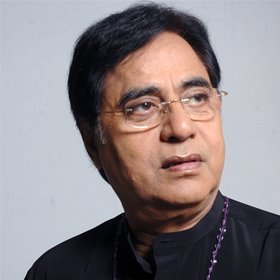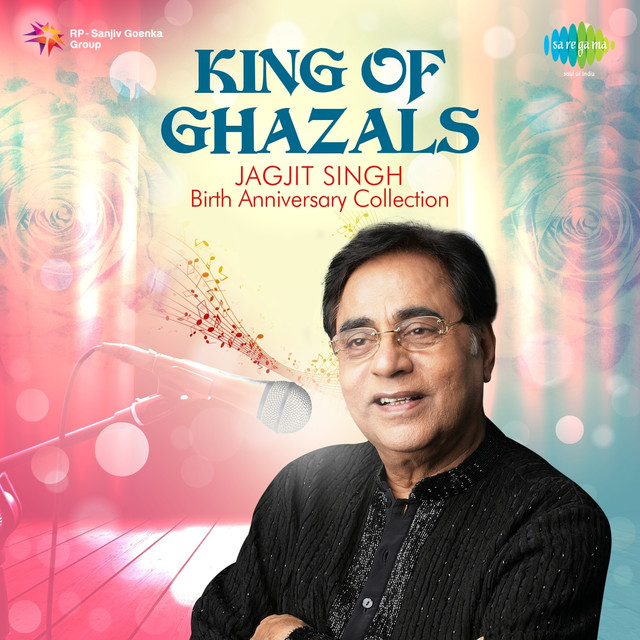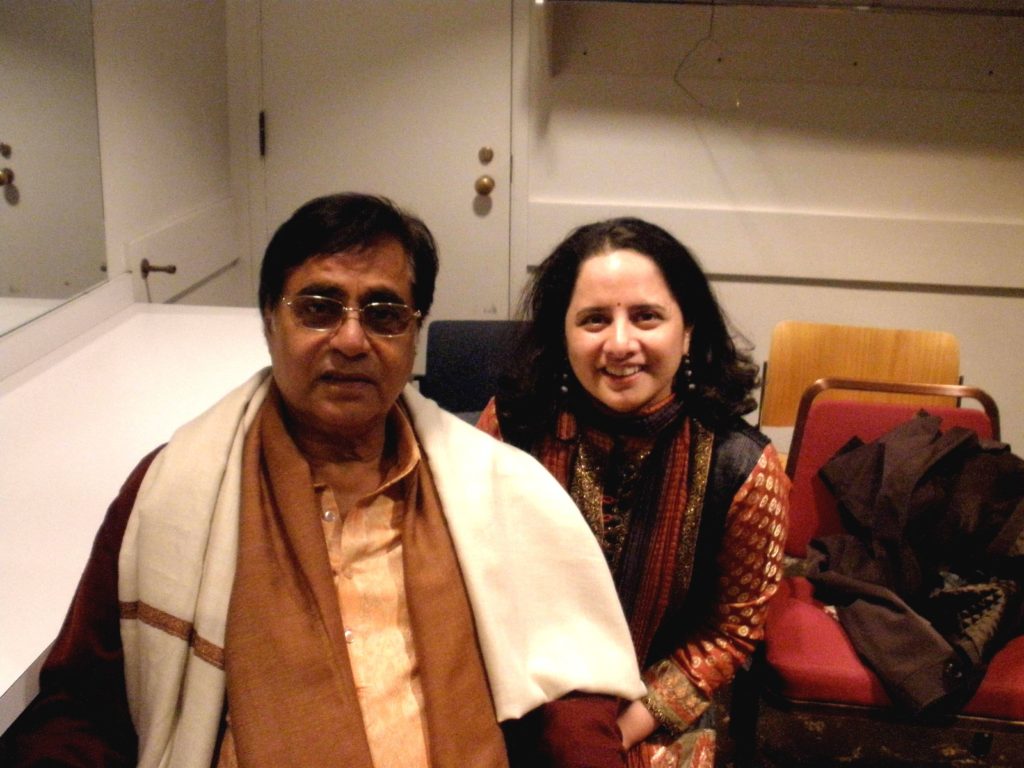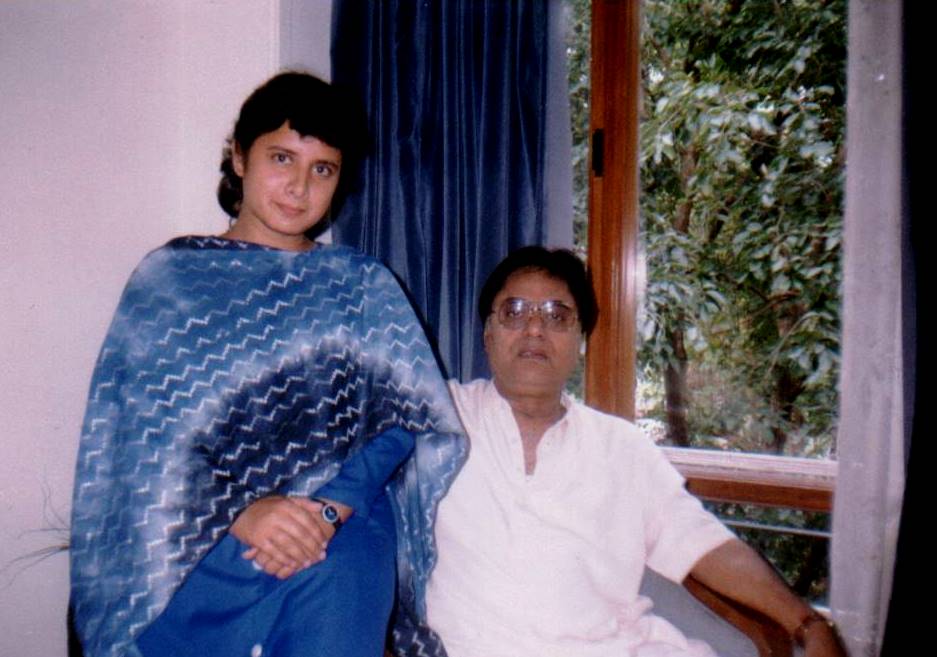By Sunayana Kachroo
(Editor’s note: He truly was the Ghazal King. Legendary ghazal singer and composer, Jagjit Singh (8 February 1941 – 10 October 2011) not only popularized and introduced ghazals to the masses, but also touched so many hearts. On his birthday, which falls on Feb. 8, Boston poetess and lyricist Sunayana Kachroo pays her tribute to ghazal legend. “It has taken me three years to finally wrap my head around Jagjit ji’s passing,” says Kachroo.)

BOSTON–“Why are these ghazals so dark, depressing and melancholic?” asked a friend while we were walking aimlessly on a back-road in Pune.
I ignored his very genuine question, kept humming Rishta kya hai tera mera and continued to walk. I could have quoted Fana Nizami Woh maza kahan wasl-e-yaar main, lutf jo mila intezaar main or Bashir Badr Wo firaaq ho ya visaal ho, teri yaad mahakegi ek din, Wo gulaab ban ke khilegaa kya, jo chiraag ban ke jala na ho or I could gone all Ghalib on him and said Dard ka hadd se guzarna hai dawaa ho jaana, but I did not because people of my generation , who thrived on Jagjit Singh’s ghazals, did not care to explain.
That was so beneath us! We claimed to be the elite who understood the nuances of his singing and explaining or defending would only demystify the whole phenomenon.
Rehne do tasavvur mein kuch khayalo ko
Lafzo ke pairahan sabpe sajte nahi
Reasoning and rationalizing poetry is an art to be used with great caution, a Brahmastra to be unleashed only as a last resort either to entice the unattainable paramour (prey) or to save yourself from the gallows. Anything other than this was totally forbidden by the fraternity.
With due respect to the king of ghazal singing Mehdi Saab, whose place in the world of ghazals is undisputed, my association with ghazals started with Jagjit Singh. Music and poetry played a big part of my growing up and I subconsciously gravitated more towards words and sounds. While life was busy grilling and thrilling me, my access to ghazals increased, my association with Jagjit ji’ voice coupled with my own experiences left deeper impressions on my receptive heart than Newton’s third law of motion could.

For a staunch listener Bazech-e-atfal has the same effect as listening to a bhajan in the morning. Addictive and therapeutic! I must also admit that it was really tough to resist the charm of Jagjit ji who crooned blues like an archer waiting patiently for its prey. There is something strangely magnetic about someone who is a connoisseur of this art. Almost Mystical!
The year was 1984; I heard the traces of a voice in the sound track of Subhash Ghai’s hit film Hero. ‘Oh! This is Jagjit Singh’ I was told by my father. What followed were years of adulation, reverence, deep connect, silent admiration and vocal praises. If I did well in school, I would get a music cassette or a book. I was almost lured into the world of music and poetry by frequent bribes by my parents.
Dhal gaya aftaab aye saqi would take me to the by lanes of downtown Kashmir, Yeh daulat bhi le lo would revive the memories of my unsullied childhood, while Tumko dekh to yeh khayaal aaya could make even doe eyed Dipti Naval fall head over heels for Farooq Sheikh and Hey govind hey gopal would bring peace and tranquility to the restless mind.

When Gulzar saab went in the narrow lanes of ballimaran, he found Mirza Ghalib strolling around in his overflowing pairahan humming Har ek baat pe kehte ho tum ki tu kya hai. It was the meeting of titans, Gulzar and Jagjit. The creaking sound of the stairs of ruins of the Ghalib Haveli or the echoes from the abandoned Kothaa of Nawaab Jaan singing Yeh na thi hamari qismat ki visaal-e-yaar hota, Ghalib came alive with the face of Naseer saab, the voice of Jagjit Singh and the direction of Ghalib. It was only later that I realized that the costumes were done by a dear friend, theater director Salim Arif.
As I hit adolescence, everyone in school was looking for emotional anchors, some chose music, some books and some both. My dear friend Inder filled our hearts to the brim with his soulful rendition of ghazals. High school musical may as well have been scripted by us. We learnt that in the chemistry laboratory oxygen and hydrogen would yield water instantly but the slow simmering alchemy of love worked its way only Ahista-ahista.
The unrequited lovers association formally declared that Teri umeed pe thukra raha hoon duniya ko will be a part of their manifesto. In the land of ghazals, nazms and poetry, the lines of morality are drawn outside the circles, deeper and sinister flaws are welcome. Saqi is a role model and Maiqada is a happening place. Falling in love with the idea of love seemed more lucrative than falling in love with a person.
After moving to Pune for my undergraduate program, my understanding of ghazals changed as did my understanding of life. Koi paas aaya savere savere made the cold winter meeting over chai and cream-roll more poetic.
Garaj baras pyasi dharti ko phir paani de maula garnered a first prize for me in a singing competition, Baat niklegi to phir door talak jayegi made heartbreaks philosophical, Jhuki Jhuki see nazar was an anthem for the love that remained unsaid.
I often found the lyrics were so apt for whatever situation I was going through that I started to believe that Jagjit ji had handpicked the lyrics just for me. While life happened, I held on to ghazals and kept music very close-in my room, in the drawer near the bed, in my diary, in my books, in my heart…my sanctuary forever.

If you were not a Jagjit Singh listener, I could not be your friend. So, the dynamics were very simple either you had to acquire that taste or you had to exit my life. The long corridors of college also bring in some life altering experiences disguised in instant connections, flings, and serious heartbreaks.
Life moved at the speed of light with unimaginable emotional chaos stuffed into it. Some people fade away quietly, some demand a settlement of accounts in form of barter of money with cassettes, some remained unaccounted and unsettled for because Teri khushboo main base khat main jalata kaise
Whether people walked with me a short-significant distance or continue to walk with me even now, they have been served with the tunes of life in the voice of Jagjit ji. I do hope that they carry these tunes along with them to last them into their own journey.
Life may be a linear journey but poetically it goes in circles so Phir usi raah guzar par shayad ham yoon hee mil sake magar shayad alludes to that possibility that our paths may cross again Jaan pehchaan se bhi kya hoga phir bhi aye dost gaur kar shayad . To me Shayad, a simple word of endless optimism.
Then came Sep 5th 1996, the day I would get to meet the legend. Lady luck was smiling on me and probably my friend Kapil was aware of my years of adulation for Jagjit ji’s music. I got an opportunity to be in the organizing committee of a show with Jagjit ji.
Listening to him croon Duniya jise kehtein hain jadoo ka khilona hai, mil jaaye to mitti hai, kho jaye to sona hai from the backstage and unravel the beautiful couplets slow and steady like a possessive paramour who unwraps each couplet like undressing the petals of a red rose. A memory that I have held on to for years.

As I transitioned from teenage years to adulthood, life presented new opportunities and new challenges, I moved to the United States almost around the same time when Marasim was released. Jagjit ji’s voice laced with Gulzar saab’s lyrics made the slushy frigid winters of New York City a little more tolerable.
This was a time when CD’s were not so portable, cell phones were actually used to make calls and calls only and the Walkman was not a man but a cool gadget to listen to music. Access to music online was very limited so I depended heavily on my limited collection of CD’s and cassettes to fill in the time of my singlehood in a city that celebrated freedom.
Har taraf har jagha beshumaar aadmi
Phir bhi tanhaiyon ka shikaar aadmi
The music that I had left at the shores of my motherland traveled back to me when technology came to its rescue by making it available online. Now a days apps like YouTube, Pandora , Gaana etc. have kept music alive and in many cases restored for eternal consumption.
While my exposure to country music, soft rock and jazz has increased, my love for ghazals has never faded out. In fact, I can see the parallels in different genres. Punjabi tappe are closer to rap and country music have traces of folk music.
A poet in me found solace in Fly Me to Moon by Tony Bennett as well as Shola hoon main bhadakne ki guzarish nahi karta. En mera geet kise na gaana was as close to heart as was I hope you dance by Lee Ann Womack.
Jagjit ji, a grieving father himself brought relief to many childless parents when he sang Mitti da bawa. Due to the struggles of his own life his music had sincerity and authenticity. As I listened to more music I realized what the genius of Jagjit Singh really was. Not only did he sing ghazals to a house-full audience till his last breath he did something more than that.
He had an awesome ear for good sound, which reflected in his compositions, he also selected lyrics that throbbed well with the pulse of his listeners. Jagjit and Chitra became first recording artists in the history of Indian music to use digital multi-track recording for their (India’s first digitally recorded) album Beyond time.
Over the years I have had many opportunities to listen to Jagjit ji live and to meet him as well. My last meeting with him was during his 2008 concert in Boston. He enthralled the audience with his spectacular performance. I have had the fortune of knowing many people who have worked with him closely, people who have been touched by his generosity or amused by his extremely witty and fun-loving nature.
Baat sirf itni nahi ki mujhey aap yaad aate ho,
baat yeh bhi hai ki mujhey woh log bhi yaad aatein hain
jinke saath baithkar aapno sunti thi
Jagjit ji liberated ghazals from the beautiful but limiting captivity of the traditional instruments and infused some fresh air of modern instruments for relevancy. He opened the vents and experimented with sound yet stayed loyal to the text.
No wonder his ghazals are very popular not only with the elite Urdu speakers but also among the common people who may not be well versed with the nuances of the lyric. He had quite a fan following amongst the youth as well.
It has taken me a few years to process the fact that he is no more. The good thing about art is that it never dies, in many ways it has the capacity to escape the wear and tear of the forces of universe. Tum yeh kaise judaa ho gaye, har taraf har jagha ho gaye.
He may have transitioned to another realm but to his listeners he continues to live through his music and is ready to time travel with us anytime we want. He accompanies us on long drives, long flights, sick days, morning jogs, class reunions. Gulzar saab says Ek bauchaar tha woh, and I believe that because as I write this piece I can hear him humming a raag, hand picking the finest lyric and pumping air into his harmonium…..I can hear him, can you?
Iss sadi mein koi sukhan nahi tumhare jaisa
Hai bayan aur magar fann nahi tumhare jaisa
(Sunayana Kachroo is a Boston-based award winning poet, lyricist and a film writer. She wishes to thank Jaya Pandey and Rohini Ganjoo.)















